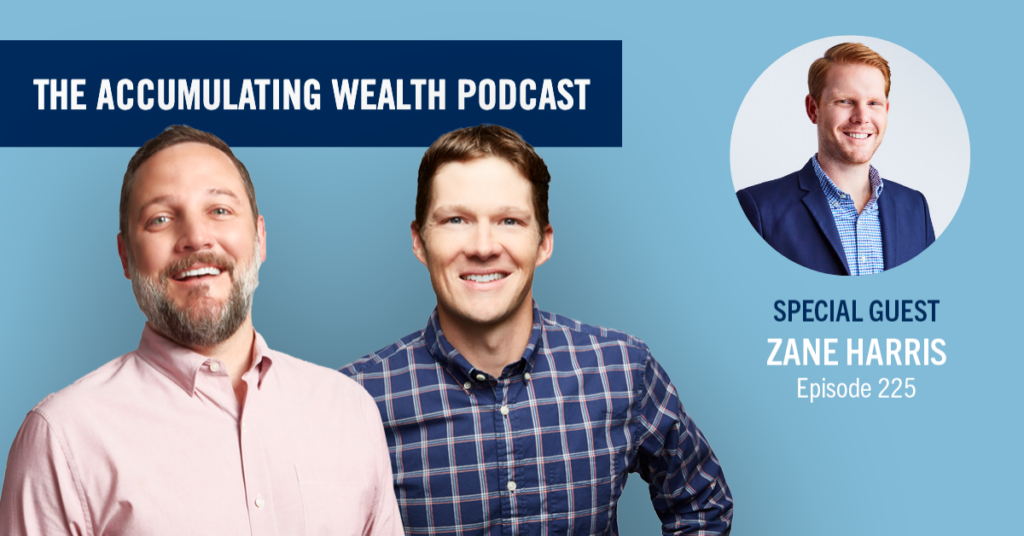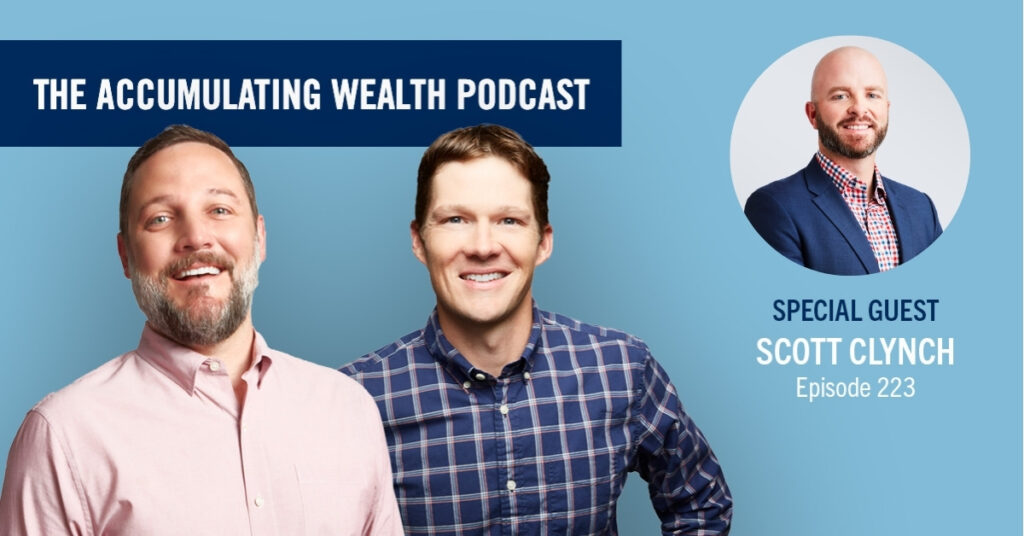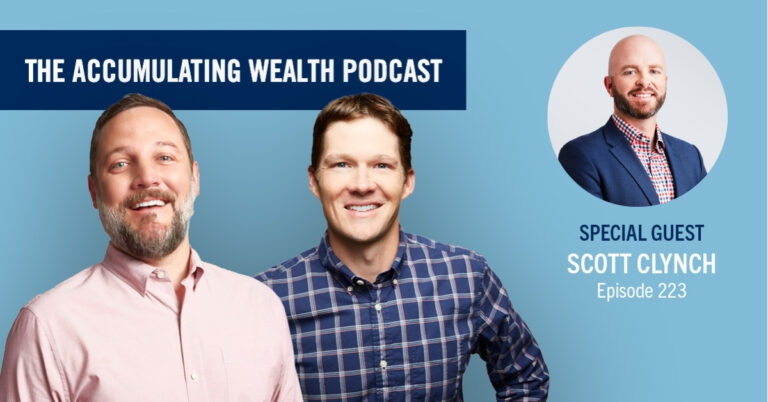Tax planning considerations to optimize your retirement portfolio savings
A strategic tax plan is one of the most important steps toward accumulating wealth, and it is something our financial planners spend a lot of time on with their clients.
In concept, it’s simple. Investors must redistribute fully taxable income into the most tax-efficient environment possible, allowing them to save more and pay less to the government. It’s likely most are already doing the basics like 401(k), traditional IRAs, Roth IRAs, and so on, but successful investors should periodically evaluate their tax savings plan and ensure it is still applicable to their personal and business goals.
“When the goal is to compound savings to increase long-term growth, getting more money into tax-advantaged environments is the most effective way to do this,” CPA Brittany Frazier says. “Taking advantage of the Roth bucket can be very appealing when looking at the long-term, especially when you can afford to take the tax hit up front.”
But a heavy weight toward Roth is not such a “slam dunk” for all investors. Let’s do a quick review of the pre-tax and Roth buckets.
KNOW THE ROTH BASICS
The biggest difference between a Roth savings environment and the traditional, pre-tax savings environment is how contributions and withdrawals are taxed.
Looking at Roth, money is funded into the Roth bucket on an after-tax basis or simply after the money has already been taxed. These funds then grow completely tax-free at the account’s rate of return. When withdrawing the funds, presumably in retirement, you don’t pay a dime in income taxes on qualified withdrawals.
The Roth bucket is more expensive on the front end, but the long-term benefit of tax-free growth is hard to beat. Simplified, you invest the dollars and allow them to compound tax-free over a long period of time while never paying tax on the growth. There are opportunities to fund into this bucket through two primary vehicles: Roth IRAs or Roth 401(k)s.
Conversely, pre-tax savings is when you fund money into a traditional IRA or 401(k), and in general, you get a tax deduction in the year of contribution. The money then grows tax-deferred, which means you don’t pay any tax until withdrawing the funds. This option can be compelling because it not only allows investors to free up cash flow to save at a higher level but also because the growth is tax-deferred, avoiding taxes from impacting growth until you start to take money out.
The key difference between Roth and traditional pre-tax savings is that over the long-term, the growth in the Roth is never taxed, whereas the growth in the pre-tax is taxed once withdrawn.
WHY ROTH?
In a prior blog, Brittany touched on the importance of a long-term diversified savings plan. Roth contributions are undoubtedly a beneficial piece of that plan.
Aside from the compelling tax reasons Roth is so attractive, Brittany summarizes the other key benefits which make the Roth bucket so valuable in an investor’s long-term plan:
- Keeps the tax rate low in retirement, which aids in strategic distribution planning once the investor is ready to pull from their assets to live on.
- Contrary to traditional IRA accounts, Roth IRAs are not subject to Required Minimum Distributions (RMDs), which allows an investor to control when is the best time to withdraw the funds based on their personal situation.
- Can be used as an attractive estate planning tactic for investors to transfer large amounts of wealth to heirs completely tax-free.
It is critical to understand that Roth contributions and/or conversions are only to be considered if an investor can afford to pay higher taxes when contributed or converted.
HOW TO GET MONEY INTO THE ROTH ENVIRONMENT
Roth IRA
Most CWA clients or high-earners are not eligible to directly contribute to a Roth IRA. If taxable income is below $144,000 for single filers or $214,000 for married, joint filers, you can fund directly into a Roth IRA. If income is above, this is where a loophole, known as a backdoor Roth, comes in.
A backdoor Roth IRA can be done on an annual basis simply by funding a non-deductible IRA and then immediately converting it to Roth. Immediately converting the non-deductible IRA keeps the contributions and conversions clean without having to factor in investment growth on the non-deductible piece.
Another way to get more dollars into the Roth bucket is to convert existing, traditional IRA money. At this time, there is no income limit or limitation on the number of dollars that can be Roth converted. This type of Roth conversion involves paying income taxes, at your ordinary income tax rate, on any funds being rolled into the Roth account that have not previously been taxed.
In either of the conversion scenarios, ensure your CPA knows you are funding these each year in order to determine the appropriate tax reporting.
CPA Tip: Consider converting existing IRA monies to a Roth in a year where your tax rate is low, tax rates are going to increase or you expect your income to increase significantly in the future.
Eliminating the ability to fund Roth IRAs and convert existing IRA money to Roth has been on the docket with legislators over the past few years.
Brittany notes, “Although it may not be imminent at this point, I feel pretty confident this will continue to have visibility over the next few years and we may see change surrounding the backdoor Roth loophole. If you have considered a Roth conversion, it’s a good time to talk to your advisor about it.”
Roth 401(k)
Another easy vehicle to leverage to accumulate Roth money is through your 401(k) plan. Most 401(k) plans allow for Roth deferrals, making this an excellent option to fund for the long-term. If you can afford to not deduct your 401(k) deferrals, the tax benefits discussed above make a Roth 401(k) a great option. You could fund up to $20,500 per year if you are under the age of 50, or for investors 50 and above, $27,000 per year could be funded in Roth 401(k) money.
Mega Backdoor Roth
A mega backdoor Roth is a special type of 401(k) rollover strategy used by people with high income to get large amounts of Roth money invested. Sounds appealing, but this strategy only works under very particular circumstances and, in most cases, is not suited for a small business owner.
A mega backdoor Roth allows investors to roll over up to $40,500 of post-tax dollars into a Roth IRA.
While it sounds compelling, after-tax contributions to 401(k) plans are not protected by safe harbor provisions of most plans, which makes it too expensive for a small business owner to take advantage of this mega backdoor strategy.
Brittany adds, “Investors don’t need to feel like they are missing out by not being able to fund a mega backdoor Roth. If looking to maximize Roth dollars, they can fund Roth deferrals into their 401(k) at the maximum annual limits and fund a backdoor Roth each year within the limits”.
Look at it this way: Combined, Roth 401(k) and backdoor Roth IRA contribution limits for a married couple is $53,000 per year if under age 50 or $68,000 if age 50 or older.
NEXT STEPS
Investors must understand the optimal strategy for their situation. There is not a one-size-fits-all approach. With the help of their investment advisors and CPAs, they should consider what works best for their financial situation.
The advisors at CWA can help talk through the options to help you save more, keep more of it and in turn, meet your long-term goals more quickly.














